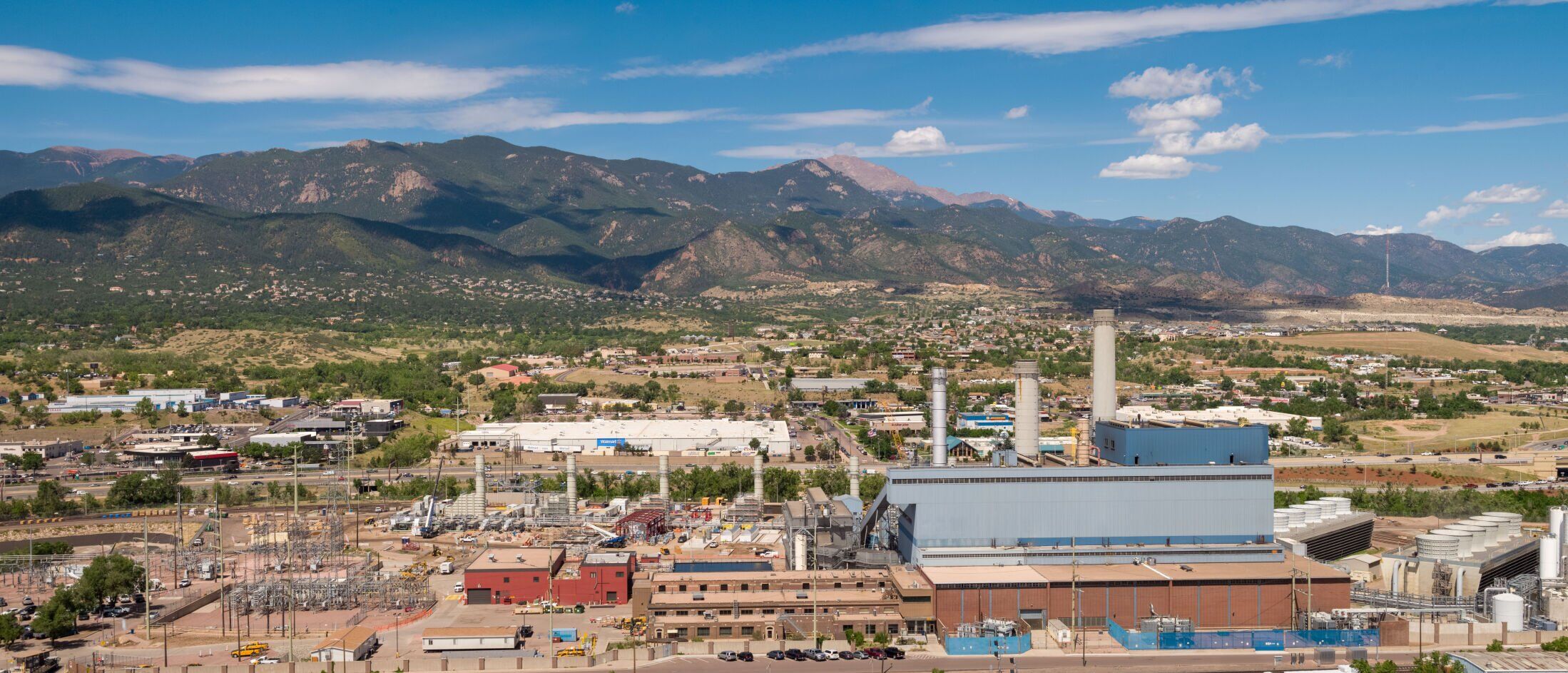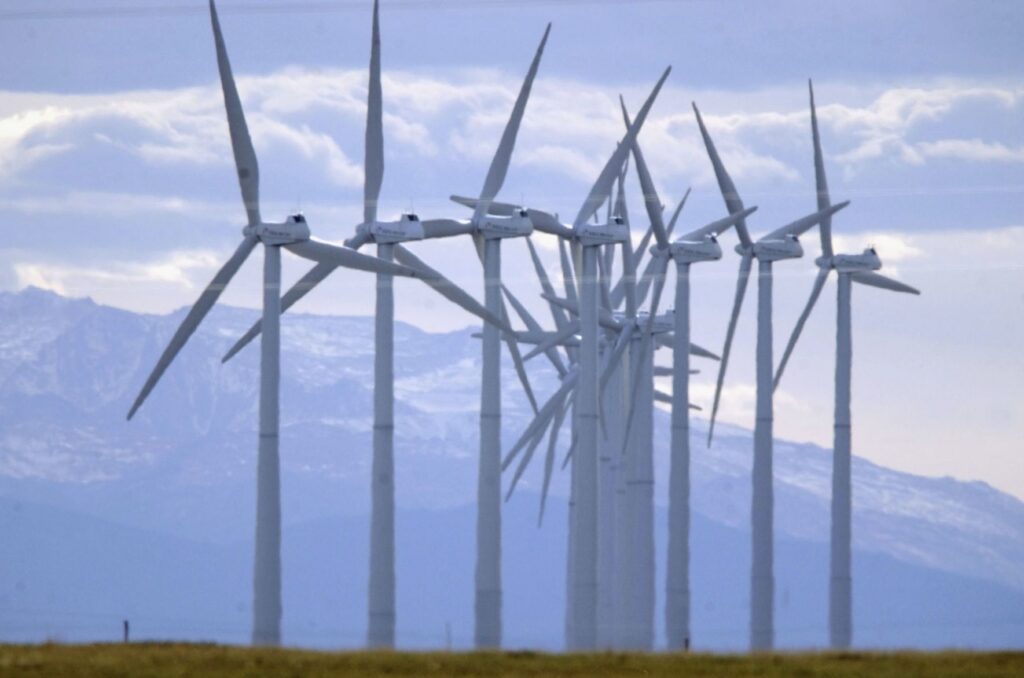With Drake’s closure, Colorado Springs Utilities to temporarily buy power on open market

Colorado Springs Utilities will end natural gas power production at the downtown Martin Drake Power Plant Thursday as the agency moves toward cleaner electricity generation.
Drake is one of the last urban power plants in the country to close and, ultimately, Utilities plans to reclaim the entire downtown site, a process that could take several years.
Natural gas units going up at Drake Power Plant, deconstruction of building likely years out
For nearly a century, Drake burned coal to power the community and was slated to keep operating that way through 2035. Economics accelerated the timeline for the closure, and it ceased burning coal last year. Staff have continued to operate the two natural gas generators in the plant when demand for electricity is at its highest locally.
“This is an end of an era,” Utilities Chief Executive Officer Aram Benyamin said.
Utilities planned for six modular natural gas units, slated to cost $120 million, to replace the big generators at Drake — southwest of Cimarron and Conejos streets on downtown’s southwest side — but construction is running a few months behind the original schedule because of supply chain problems. Components needed for the generators coming from Europe have been slow in arriving, in part, because of the conflict between Russia and the Ukraine.
“It’s a journey from Hungary,” he said, of the distance the components will cover.
The new generators are expected to come online early next year. They will run 4%-8% of the time and they could produce power for sale on the open market, Utilities staff said earlier. Utilities joined the Southwest Power Pool in August allowing for those sales.
Neighbors band together to stop gentrification from erasing historic Mill Street in Colorado Springs
In the interim, the city will rely on power purchased ahead of time that will help meet peak electricity demands in the community. The cost for that power was locked in almost a year ago, Benyamin said, and is insulated from the expected price spikes in natural gas.
Despite instability in natural gas prices, closing the coal-burning generators at Drake is still the most cost-effective option because of the high operations and maintenance costs associated with the large plant, he said.
Colorado Springs residents probably will pay more for heat and electricity this winter than in the past, as high demand persists in the global natural gas market. But those increases will be unrelated to the closure of the plant.
Benyamin said projections show natural gas prices reaching $8 per dekatherm, up from last winter’s peak of over $6 per dekatherm. During the cold months last year, average residential bills hit around $300. Natural gas is a large driver of costs on bills, because the community relies on it for heat and a portion of our electricity production.
Price hikes are expected to be driven by low supply in the U.S. and high demand in Europe, a market historically reliant on Russia. The U.S. inventory of natural gas was 12% below the five-year average in July and it is expected to be 6% below average by October, when cold weather starts setting in, according to the U.S. Energy Information Administration.
Utilities has tried to soften the local economic blow of closing Drake by reassigning employees who worked there while it burned coal to other areas.
The plans for decommissioning the historical plant are still underway and Utilities is reviewing bids from companies interested in the work, Benyamin said. Much of the initial activity will take place inside the plant as items are salvaged for internal use or sold for scrap, Utilities staff said previously.
The push to improve air quality and cut greenhouse gas emissions also was a major consideration around closing the downtown plant.
Colorado Springs Utilities board members concerned about high turnover, senior leadership departing
The carbon dioxide emissions are expected to be much lower —less than half of the emission per megawatt-hour of power produced by coal, he said.
By 2030, Utilities expects to cut emissions 80%. As part of the goal to cut carbon, Utilities expects to stop burning coal at Ray Nixon Power Plant south of town in 2029.
At the same time, Utilities is expanding its portfolio of renewable energy sources. A new 175-megawatt solar project is expected to come online in 2024. The project is expected to include a significant amount of battery storage, although that component of the project is going back out to bid to take advantage of the new tax breaks. While Utilities is not subject to taxes, the companies that will provide solar power are and so tax breaks could lower the overall cost that Utilities pays, he said.






